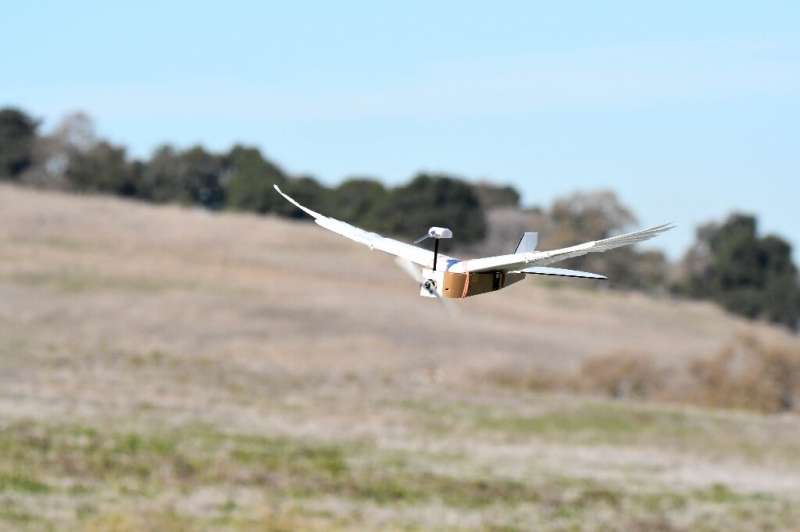'PigeonBot' brings aircraft closer to feathered-flight

Since the dawn of the aviation era, inventors have strived to build aircraft that fly as nimbly as birds, whose morphable wings allow for faster, tighter turns and more efficient gliding.
That dream was a step closer to reality Thursday after researchers at Stanford University announced they had studied the wings of common pigeon cadavers, then used their findings to build a radio-controlled "PigeonBot" with wings made with 40 real feathers.
"Aerospace and materials engineers can (now) start rethinking how they can design, manufacture and control materials and wings that morph as deftly as birds do," said David Lentink, an assistant professor of mechanical engineering at Stanford and the senior author of two papers describing the results in the journals Science and Science Robotics.
All four-limbed animals, including dinosaurs, evolved from an ancestor that had five digits at the end of its limbs, which became hands, paws, flippers, or wings over time.
Modern birds retained three digits, or fingers. By studying the pigeon wings in a wind tunnel, the researchers found that wrist and finger action provided fine control over feather placement, wing span, and area.
In flight tests, manipulation of the wrist and fingers initiated stable turn maneuvers at tight angles, which the researchers said provided some of the first evidence that birds primarily use these digits to steer in flight.
The teams also drilled into the mechanics of how birds morph their wings, finding that adjacent flight feathers stick together to form a continuous wing using a hook-like microstructure that acts like Velcro.
It locked together as the wing expanded, then slipped loose again as the wing contracted, strengthening the extended wing and making it resistant to turbulence.
And they found the structures were present in most other bird species except owls, which allowed them to fly more silently.
Lentink added that the Velcro-like structures, known by their technical name as "lobate cilia," could have a wide range of fashion, medical and aerospace applications which he and colleagues were looking at as an area of future research.
More information: L.Y. Matloff el al., "How flight feathers stick together to form a continuous morphing wing," Science (2020). science.sciencemag.org/cgi/doi … 1126/science.aaz3358
Soft biohybrid morphing wings with feathers underactuated by wrist and finger motion, Science Robotics (2020). robotics.sciencemag.org/lookup … /scirobotics.aay1246
© 2020 AFP


















